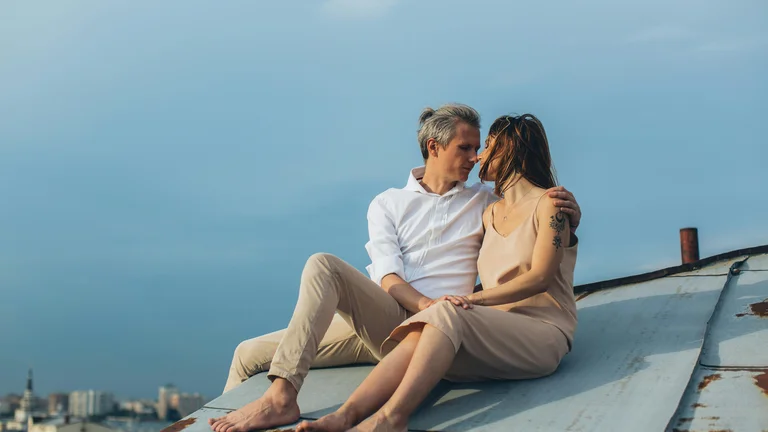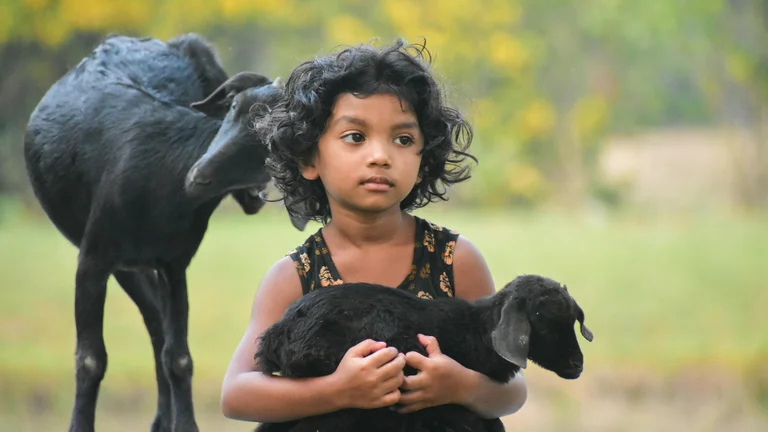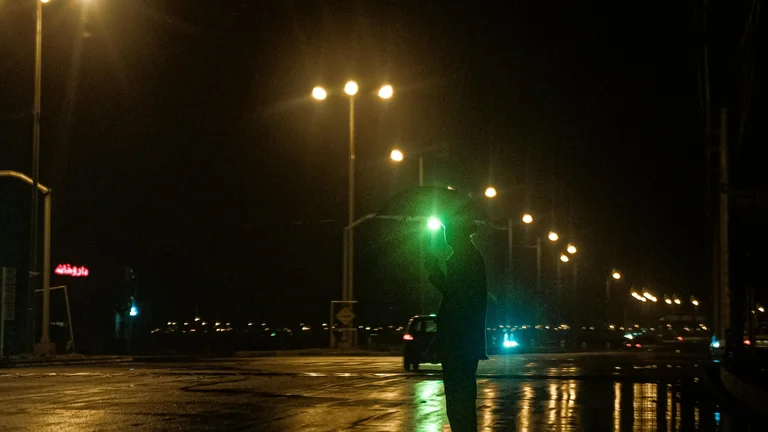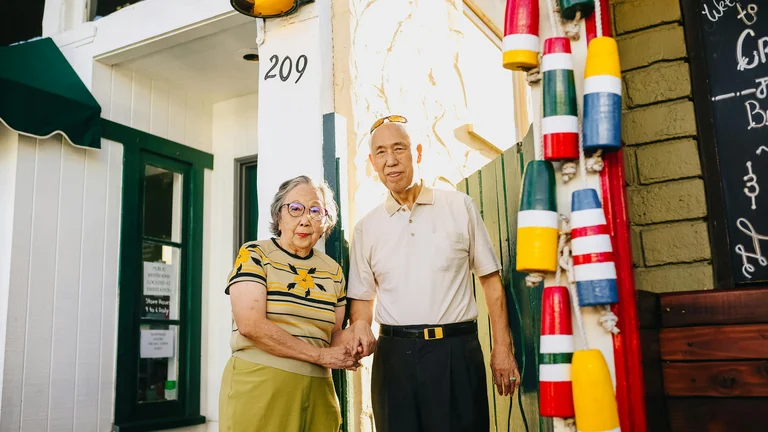
Korean dramas have captivated global audiences with their intricate storytelling, emotional depth, and unforgettable scenes. Among the various iconic elements found within these dramas, rooftop scenes hold a special place. These rooftop moments encapsulate significant emotional releases, intimate conversations, dramatic confrontations, and often pivotal plot developments. The rooftop setting, typically characterized by its expansive sky views, open-air ambiance, and symbolic elevation above the everyday world, provides a unique space where characters reveal their true feelings or face turning points in their narratives. This article explores the multifaceted role and impact of iconic rooftop scenes in Korean dramas, delving into their cinematic significance, cultural importance, and various memorable examples that have become staples within the genre.
The rooftop setting in Korean dramas serves as a liminal space — a threshold between the confines of everyday life and a realm where characters confront personal truths, desires, and dilemmas. Unlike crowded streets or bustling interiors, rooftops evoke a sense of solitude and openness conducive to vulnerability and honesty. The elevated perspective symbolizes a detachment from societal norms and pressures, facilitating revelations and moments of genuine human connection. Korean filmmakers utilize this environment to amplify emotional tension and highlight character development, often pairing these scenes with evocative cinematography that takes advantage of natural lighting, sunset hues, or night skies littered with stars. This spatial setting becomes a visual metaphor for reflection, hope, and existential freedom.
Throughout many Korean dramas, rooftop scenes commonly depict a range of emotional encounters: first confessions of love, reconciliations after conflicts, moments of introspection following tragedy, and even intense arguments or confrontations. Their frequent appearance is no coincidence; this narrative device has become a recognizable trope that audiences anticipate. The symbolism inherent in these scenes lies in the contrast between the confined life below and the limitless sky above, mirroring characters' internal struggles juxtaposed with aspirations or despair. Moreover, the rooftop is often a neutral ground — outside the control of families, workplaces, or schools — allowing characters from different backgrounds or social standings to interact more freely. This democratizing spatial quality aligns with Korean dramas' broader thematic explorations of social hierarchy, personal freedom, and emotional release.
Historical and Cultural Context of Rooftop Scenes
To fully appreciate the prominence of rooftop scenes in Korean dramas, it is essential to understand their cultural context. In densely populated Korean cities, rooftops are more than mere architectural afterthoughts; they are communal spaces where residents gather for leisure, chores, or quiet solitude. Traditionally, rooftops served as sites for drying laundry, stargazing, or informal socializing within tightly knit communities. This communal aspect endows rooftop spaces with a sense of familiarity and accessibility, making the setting relatable to viewers across different socioeconomic backgrounds.
The rooftop also symbolizes social elevation and escape in a society traditionally structured by hierarchical relationships and roles. Characters ascending to a rooftop may metaphorically ascend beyond their societal restrictions or confront them with newfound perspective. For younger characters in particular, rooftops represent freedom from parental control and societal expectations. A large number of Korean dramas center on youth dealing with academic stress, family obligations, and societal conformity, making rooftop scenes a natural backdrop for their moments of rebellion, self-expression, or raw honesty.
Significantly, rooftop scenes have evolved in Korean media alongside the shifting dynamics of Korean urban life. As cities grew denser and high-rise buildings became common, rooftops transitioned into symbols of solitude amidst the crowded cityscape. Films and dramas began to use the rooftop setting to illustrate characters' feelings of isolation or longing for connection within the anonymity of urban life. This duality—as a space both for isolation and coming together—enriches the narrative use of rooftops and explains their enduring appeal.
Cinematic Techniques in Rooftop Scenes
The visual language of rooftop scenes in Korean dramas is carefully crafted to enhance narrative impact. Directors and cinematographers employ specific techniques to underscore the emotional tone and thematic undercurrents of these moments. Lighting plays a crucial role, with scenes often set at twilight or night to utilize natural colors that evoke particular moods—soft oranges and pinks of sunset suggest warmth and hope, whereas the dark blue night sky dotted with stars communicates introspection or melancholy.
Framing and camera angles further contribute to the symbolism and emotional effect. Wide shots capture the expanse of the rooftop and sky, highlighting characters’ smallness in relation to the universe and evoking feelings of vulnerability or freedom. Medium and close-up shots focus on intimate expressions and physical details, emphasizing personal connection and emotional intensity. The contrast between vast open space and close human interaction underscores the dual nature of rooftop scenes as both distant and intimate.
Sound design is also meticulously considered. Quiet ambient noises, such as wind, distant city sounds, or the rustling of clothes, create an immersive, realistic atmosphere. Music, when used, is subtle and mood-appropriate—often slow, melodic tracks that heighten emotional resonance without overpowering dialogue. These elements combine to create an immersive sensory experience, drawing viewers into the characters’ emotional states.
Iconic Rooftop Scenes: Notable Examples and Their Significance
Several Korean dramas have featured rooftop scenes that became iconic for their emotional depth and narrative importance. These scenes offer insight into the reasons why rooftops are such compelling settings for storytelling.
One famous example occurs in the drama "Reply 1988," where the rooftop serves as a gathering point for close friends and family. Here, the rooftop operates as a microcosm of community life, illustrating warmth amid hardship and the bittersweet nature of growing up. Scenes on this rooftop are marked by group dynamics, shared laughter, and poignant farewells, contributing heavily to the nostalgic tone of the series.
In contrast, the drama "Goblin" (also known as "Guardian: The Lonely and Great God") utilizes rooftop scenes to deepen the romantic tension between the protagonists. The rooftop becomes a physical and metaphorical meeting place outside the bounds of fate and time, where characters express vulnerability and confront immortal loneliness. Cinematic framing and the ethereal night sky amplify the fantasy and emotional intensity of these scenes, embedding them firmly in fans' memories.
Another example is "Itaewon Class," where rooftop scenes signify moments of introspection and strategic planning. For the protagonist, ascending the rooftop symbolizes rising above societal oppression and personal loss to chart a new path. The rooftop here acts as a vantage point, reflecting not just the physical elevation but also the character’s growing emotional strength and resolve.
These examples reflect different narrative uses of rooftop scenes—communal bonding, romantic revelation, and individual empowerment—highlighting the rooftop’s versatility as a setting that accommodates diverse story arcs and emotional tones.
Thematic Roles of Rooftop Scenes
Beyond their cinematic and cultural appeal, rooftop scenes in Korean dramas fulfill varied thematic functions, enhancing story depth and character development. Examination of these thematic roles reveals why rooftop scenes remain a staple narrative device.
1. Symbol of Escape and Freedom: Characters often retreat to rooftops to escape from stresses, conflicts, or societal expectations. This physical elevation mirrors the desire for liberation, whether temporary or permanent. Rooftops provide a space where characters breathe away from suffocating environments.
2. Locus of Confession and Intimacy: Korean dramas frequently use rooftops as confession sites, where characters reveal hidden feelings or secrets. The privacy, combined with the openness of the setting, makes the rooftop ideal for honest, raw dialogue. This recurring motif strengthens emotional engagement and plot progression.
3. Place for Reflection and Decision-Making: Rooftops offer characters a vantage point not just visually but mentally, becoming spaces for contemplation and planning. Characters reconsider choices, weigh dilemmas, and resolve to change their situations while gazing at the surrounding cityscape or night sky.
4. Bridge Between Worlds: The rooftop can symbolize a connection or meeting point between characters from different social, economic, or emotional backgrounds. Meeting on the rooftop circumvents societal barriers, enabling equal footing and genuine interaction.
5. Emotional Crescendo Setting: Crucial dramatic events like confrontations, reconciliations, or revelations often occur on rooftops. The elevated setting heightens tension and provides a visually dramatic backdrop, enhancing narrative impact.
These thematic roles overlap consistently across various dramas, illustrating the rooftop’s narrative flexibility and symbolic richness. It serves both as a physical location and an emotional landscape within the drama’s universe.
Comparative Table: Iconic Korean Drama Rooftop Scenes
| Drama | Scene Purpose | Emotional Tone | Key Character Dynamics | Visual/Cinematic Features |
|---|---|---|---|---|
| Reply 1988 | Community bonding, nostalgic reflection | Warm, bittersweet | Friends and family interactions | Natural lighting, group framing, daytime setting |
| Goblin | Romantic tension, existential contemplation | Intense, ethereal | Immortal beings and mortal interactions | Nighttime shots, sweeping sky views, moody lighting |
| Itaewon Class | Reflection, empowerment planning | Resolute, introspective | Protagonist alone or with close allies | Wide cityscape views, sunset lighting, solitary focus |
| My Mister | Consolation, personal healing | Somber, hopeful | Mentor-mentee dynamic, quiet connection | Muted tones, rain or nighttime ambience |
| Weightlifting Fairy Kim Bok-joo | Young love, lighthearted confessions | Playful, tender | Romantic leads in vulnerability | Soft lighting, pastel settings, daytime rooftop |
Step-by-Step Guide to Crafting Memorable Rooftop Scenes in Korean Dramas
- Step 1: Establish the Emotional Context — Define the precise emotional moment the rooftop will capture, whether it’s tension, relief, or confession.
- Step 2: Choose the Right Time of Day — Select lighting and ambiance that inextricably tie to the intended mood, using sunset, twilight, or night to convey subtext.
- Step 3: Develop Character Interaction — Frame interactions authentically, considering the nature of the relationship and the gravity of the dialogue.
- Step 4: Utilize Visual Symbolism — Incorporate elements such as open skies, cityscapes, or weather conditions that reinforce thematic motifs.
- Step 5: Complement with Sound and Music — Align background sounds and music subtly to enhance emotional depth without overshadowing performance.
- Step 6: Integrate Movement and Blocking — Use the rooftop’s spatial openness to express emotional dynamics, like pacing for anxiety or closeness for intimacy.
- Step 7: Finalize with Cinematic Style — Apply appropriate camera shots and angles that emphasize vulnerability, connection, or distance as needed.
Following these structured steps helps filmmakers create rooftop scenes that resonate deeply with viewers and situate themselves firmly within the cultural and narrative traditions of Korean dramas.
Psychological Impact of Rooftop Scenes on Viewers
Viewers consistently respond to rooftop scenes emotionally and psychologically due to the combination of setting, narrative weight, and performance intensity. These scenes often evoke feelings of catharsis, empathy, or introspection. The visual openness of rooftops contrasts with characters’ enclosed emotional struggles, generating a powerful resonance.
Psychologically, the elevation and openness symbolize a space free from constraints, inviting viewers to vicariously experience character vulnerability and breakthroughs. Rooftop scenes tend to induce a mood of solemnity or hope, facilitating deeper engagement with the characters’ journeys. For fans, these moments often become symbolic markers of character growth or relationship development.
Furthermore, rooftop scenes cater to universal human experiences such as seeking solitude, confronting inner turmoil, or sharing heartfelt moments. This universality enhances the scenes’ accessibility beyond cultural boundaries, contributing to the global popularity of Korean dramas.
Practical Aspects: Filming Rooftop Scenes in Urban South Korea
Producing rooftop scenes involves specific logistical and technical challenges, especially in the context of urban South Korea. Meticulous location scouting is necessary to find rooftops that are both visually compelling and safe for actors and crew. Permissions from building owners and compliance with safety regulations are mandatory, given the inherent risks of elevated filming locations.
Weather also plays a critical role; rooftop filming is often scheduled during favorable conditions to leverage natural light and avoid disruptions. Technical setups may include harnesses or temporary barriers for safety, camera stabilization equipment suited for narrow or constrained spaces, and specialized lighting rigs that simulate dusk or night when actual conditions are unavailable.
Production teams often must balance the desire for authenticity with practical considerations. For instance, some rooftop scenes are filmed on studio sets replicating rooftop environments to gain greater control over variables. This practice allows for nuanced visual storytelling without compromising safety or scheduling. Such choices illustrate the complexity behind seemingly simple rooftop moments in dramas.
Lessons from Iconic Rooftop Moments: Influence on Global Audiences
The rooftop scenes’ prominence in Korean dramas has influenced international productions and audiences significantly. The emotional gravity and aesthetic elements have inspired filmmakers worldwide to incorporate similar elevated, open-air spaces for critical character moments. Fans of Korean dramas across Asia, Europe, and the Americas often cite rooftop scenes as their favorite due to their visual beauty and narrative significance.
Streaming platforms and social media amplify the reach of these scenes, where viewers extract and share rooftop moments as GIFs, memes, or fan edits, expanding cultural appreciation. This dynamic contributes to the Hallyu Wave’s momentum, the global spread of Korean popular culture. Understanding how rooftop scenes resonate cognitively and emotionally with a diverse audience can inform future storytelling and production strategies both in Korea and internationally.
Summary of Key Points About Iconic Rooftop Scenes
- Rooftop scenes in Korean dramas symbolically represent freedom, escape, and emotional openness.
- They serve as narrative spaces for confessions, confrontations, and character reflection.
- Cinematography employs natural lighting, expansive framing, and subtle soundscapes to enhance mood.
- Rooftop locations reflect cultural realities of Korean urban architecture and social dynamics.
- Iconic dramas such as "Reply 1988," "Goblin," and "Itaewon Class" showcase diverse uses of rooftop scenes.
- Filming on rooftops poses unique logistical challenges, often mitigated by studio sets.
- These scenes have considerable psychological impact on viewers, fostering empathy and intimacy.
- Global fandom actively engages with rooftop scenes, promoting Korean drama culture internationally.
The following table provides an overview of typical characteristics associated with rooftop scenes based on emotional intent and cinematic elements.
| Emotional Intent | Common Cinematic Elements | Typical Character Interaction |
|---|---|---|
| Confession of Love | Sunset lighting, close-up shots, soft music | Two characters expressing vulnerability and hope |
| Confrontation | Nighttime setting, wide shots, tense silence | Opposing characters exchanging intense dialogue or accusations |
| Melancholic Reflection | Rain or cloudy skies, solitary figures, ambient city sounds | Single character contemplating personal loss or struggle |
| Celebration or Bonding | Daylight, group shots, laughter and casual movement | Friends and family sharing joyful or nostalgic moments |
By understanding these nuances, one gains a comprehensive view of how rooftop scenes function as crucial narrative and emotional devices within Korean dramas.
FAQ - Iconic Rooftop Scenes in Korean Dramas
Why are rooftop scenes so common in Korean dramas?
Rooftop scenes offer a symbolic and practical setting for emotional honesty, reflection, and dramatic storytelling. They provide characters with a space detached from societal pressures, enabling intimate interactions and significant plot developments.
What makes rooftop scenes emotionally impactful in Korean dramas?
The open, elevated setting coupled with natural lighting and cinematic framing creates a mood conducive to vulnerability and introspection, allowing viewers to connect deeply with the characters' emotions.
Are rooftop scenes unique to Korean dramas only?
While rooftop scenes appear in various global media, their thematic complexity, cultural symbolism, and narrative integration are especially pronounced in Korean dramas, making them distinctive within that genre.
How do rooftop scenes reflect Korean urban culture?
In densely populated cities, rooftops serve as communal or private spaces, reflecting real-life social dynamics and providing metaphorical meaning tied to escape, freedom, and social hierarchy relevant to Korean society.
What are some iconic Korean dramas known for their rooftop scenes?
Notable examples include "Reply 1988" for community bonding, "Goblin" for romantic and supernatural themes, and "Itaewon Class" for personal empowerment, each employing rooftop scenes uniquely.
What challenges do producers face when filming rooftop scenes?
Filming rooftops involves safety concerns, weather dependency, securing permissions, and sometimes reconstructing sets in studios to achieve the desired atmosphere while ensuring actor safety.
Iconic rooftop scenes in Korean dramas symbolize emotional openness and freedom, serving as pivotal settings for confessions, reflection, and dramatic shifts. Rooted in cultural context and enhanced by cinematic techniques, these scenes deepen narratives and forge strong viewer connection, making them integral to Korean drama storytelling.
Rooftop scenes in Korean dramas occupy a unique narrative space that combines cultural symbolism, cinematic artistry, and emotional resonance. Their persistent inclusion across diverse genres indicates their essential role in articulating characters' inner worlds and advancing storytelling. Through carefully crafted visuals and meaningful interactions, rooftop moments invite viewers into heightened states of empathy and reflection, underscoring their significance in the phenomenon of Korean drama storytelling.






